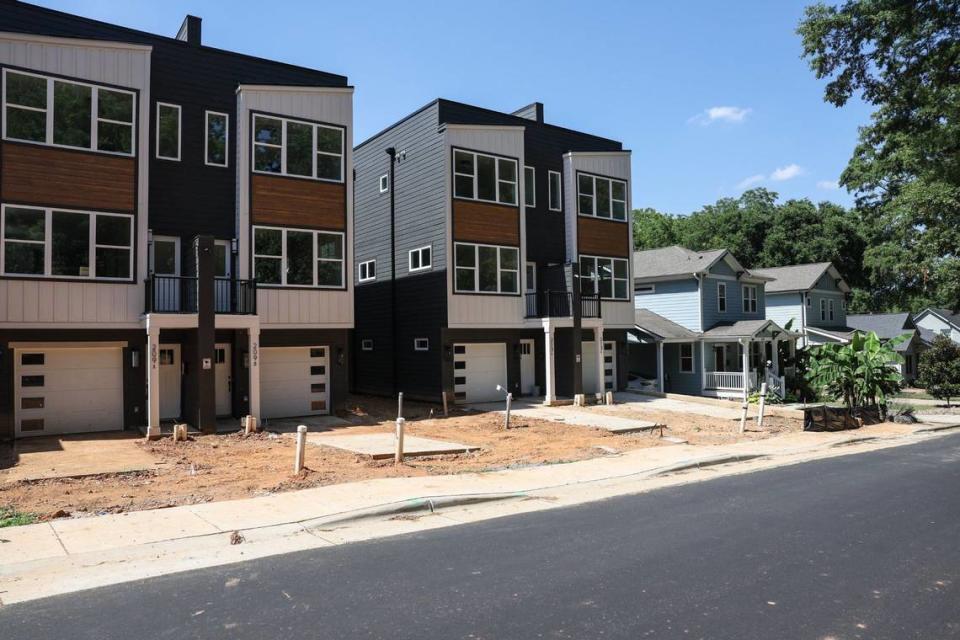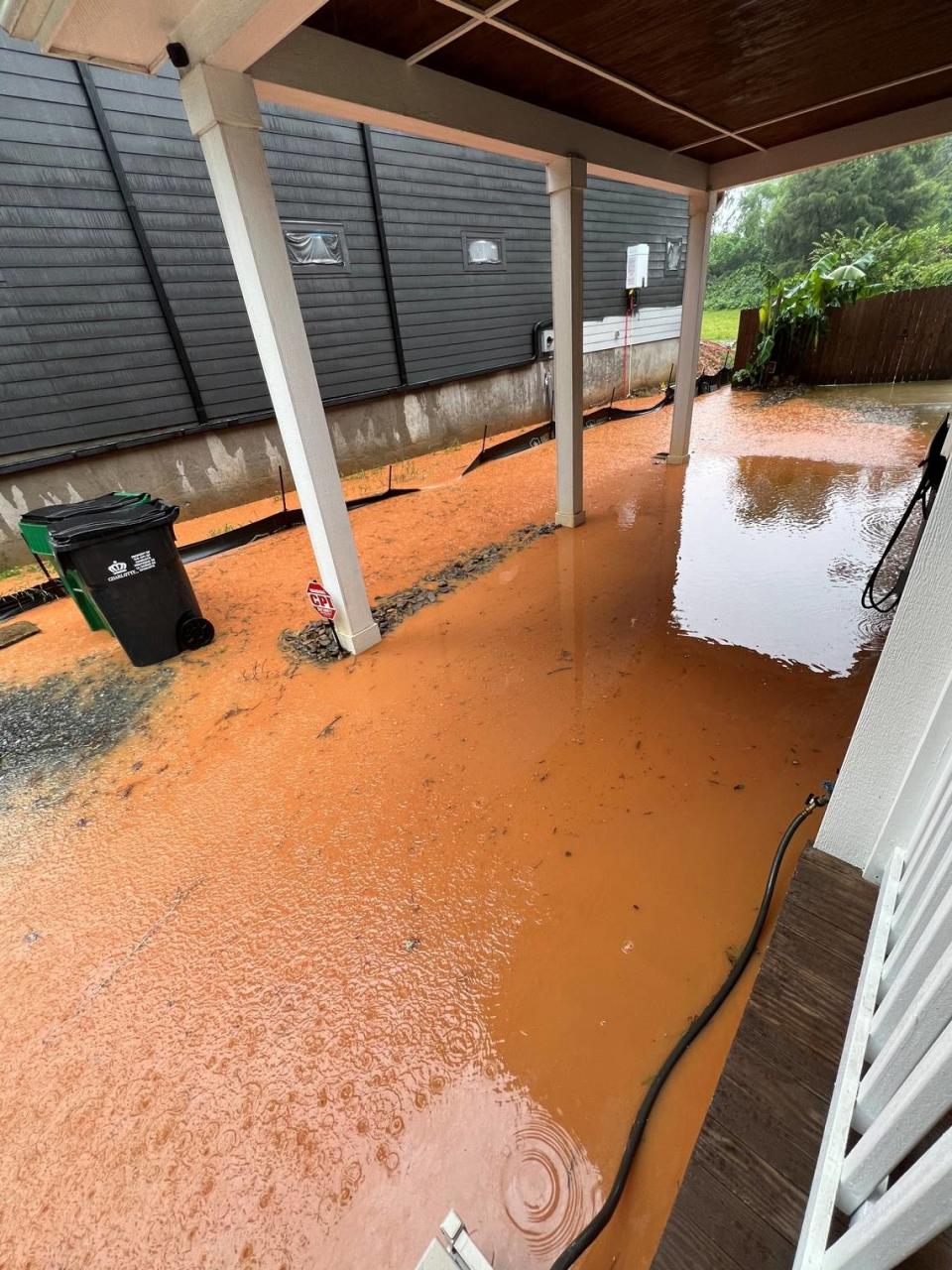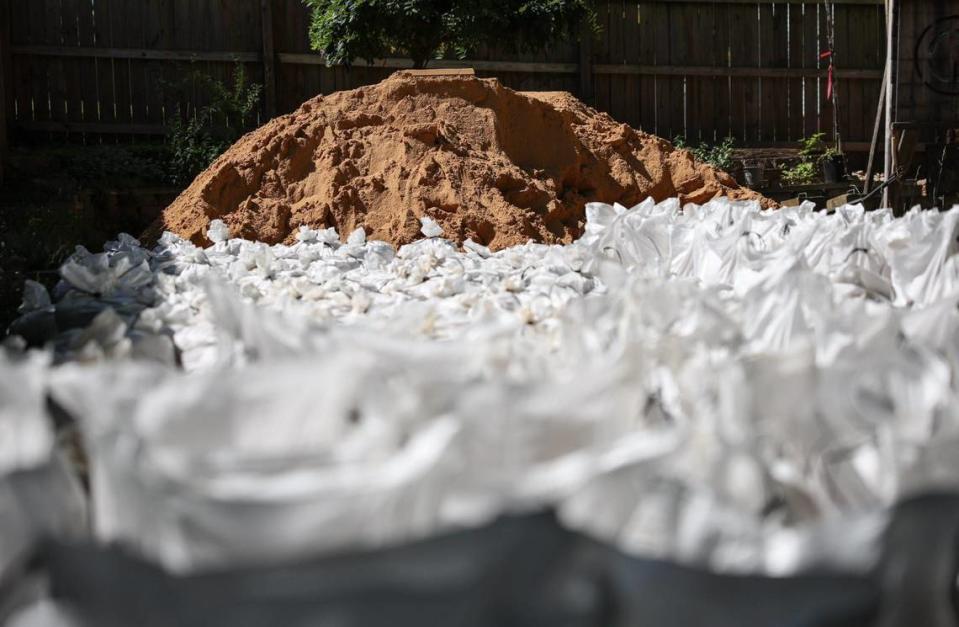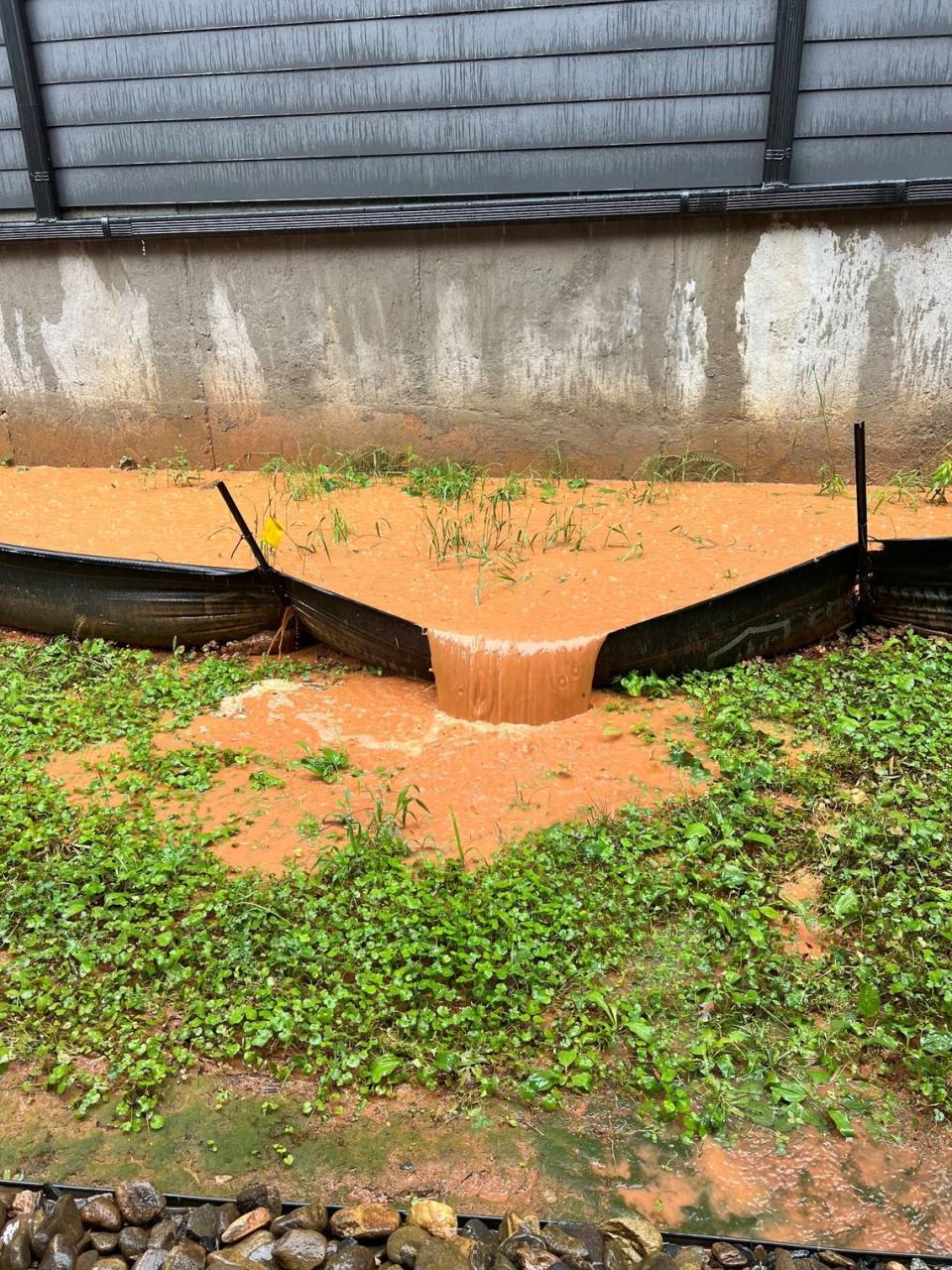Charlotte West End yards flood when it rains — and the city’s new rules won’t help
Drew Farnie used to enjoy watching rainstorms.
Sitting on his porch in Charlotte’s Historic West End, coffee mug in hand, he felt calm. The soft pattern of the rainfall and its smell soothed him.
But now Farnie can’t watch a storm without wondering whether storms will flood his property and how much the damages will cost him.

Coxe Avenue residents say builders Whitehaven Development and Verde Homes neglected to address stormwater runoff concerns when building six homes next to their properties in November 2022. Every time it rains, the residents’ yards flood despite newly installed systems to move the water out to the street.
Here's our latest accountability reporting
Reality Check reflects the Charlotte Observer’s commitment to holding those in power accountable. Here are three of our stories from this week:
→ Irate CLT passengers keep griping about TSA lines. What’s behind all the delays?
→ Marshals task force in Charlotte police shootout wasn’t using body cameras, lawyer says
→ CMS superintendent expects to ‘meet 100%’ of 5-year goals. Is that realistic?
It’s part of an infill development trend the city’s Storm Water Services sees across Charlotte, a department spokesperson told the Observer. Charlotte’s Historic West End in particular faces “rising concerns of displacement and change” as Charlotte grows, says a website developed in part by Johnson C. Smith University’s James B. Duke Memorial Library. And while a new ordinance went into effect in June 2023 to help address stormwater runoff from developments, the regulations began after the new homes received approval.

Farnie said months of back-and-forth conversation with the builder led nowhere.
Whitehaven Development says residents are responsible for fixing the issue. Residents believe the developer should take more responsibility. And the city of Charlotte told the Observer it’s letting the builder and the residents sort it out because the new regulations don’t apply to this property.
But the frequent flooding has cost Farnie more than $30,000. And there’s no solution in sight.
“It’s emotional,” Farnie said. “The money that I spent on the house trying to fix it … is in danger because of a developer that just doesn’t care about the community.”
‘I either watch my house crumble or spend money’

Farnie, 43, moved into his 1930s home in 2017. He wanted to remodel the house instead of tearing it down and rebuilding. It’s important to keep the historic charm, he said.
Farnie’s and neighboring homes sit lower than the main road. As more homes are built between his property and the road, more water running downhill gathers and seeps into his foundation.
Verde Homes started building on the lot next to Farnie’s neighbor, Margaret Borg, in November 2022. Farnie and Borg, 38, talked with the builders at the start to warn them about the history of storm water runoff on the property. They were supposed to work together, Borg said.
Farnie, a civil engineer who specializes in redirecting stormwater on construction sites, asked the builders to raise the elevation of the new property to the height of the road. This would help redirect the water to the road instead downhill through neighbors’ yards.
That didn’t happen. And Farnie said faster-flowing water sped toward his property instead of the road.
Farnie paid about $15,000 to install a device to pump water out of his yard and into the city drain, but the water seeps into the crawl space beneath his house because of how often it floods, leaving cracks in the foundation
He estimates that he will spend a total of $75,000 before the foundation is repaired.
“I either watch my house crumble or spend money to protect it,” Farnie said.
Whitehaven Development took over the construction and property from Verde Homes at the end of 2023.
The stormwater runoff Farnie and others experience comes from “pre-existing drainage conditions” when Farnie’s and Borg’s houses were built, Whitehaven Development said in a letter to The Charlotte Observer.
“The simple fact is that the neighboring lot is downhill from the RR Whitehaven lot and has grading problems of its own that cause it to retain water rather than pushing it toward the street,” the company said in its statement.
It’s ‘like a ticking time bomb’

Borg and Farnie aren’t the only residents concerned about potential damages from the flooding.
Elizabeth Laswell, 33, lives in the house between Borg and Farnie. She and her husband, first-time homeowners, moved into their four-bed, three-bath home in 2021.
“It kind of feels like a ticking time bomb before something goes really wrong,” Laswell said.
She and her husband spend time cleaning their yard when it fills with debris and red clay after rain. Her yard has been completely underwater after multiple storms.
The stormwater runoff also changed her perspective on becoming a homeowner. She felt proud, but now she’s concerned about her home and the costs of fixing any damages.
“It’s really scary to think that something that is so meaningful and is probably one of the greatest achievements I’ve ever done in my life is at risk,” Laswell said.
Where the city stands

Borg says no affordable system can drain the water quick enough. For her and other residents, it’s up to the developer and the city to make real change happen.
But the development on Coxe Avenue follows a similar pattern of infill development the city is seeing in other areas of Charlotte, a spokesperson with Charlotte Mecklenburg Storm Water Services told the Observer. And the new rules only recently went into effect.
The city’s Unified Development Ordinance went into effect June 2023 to help manage new developments. It contains regulations that force builders to minimize erosion and downstream flooding. One part of the ordinance requires builders to have measures that slow stormwater. If the property has at least 5,000 square feet of built space, like the new development Coxe Avenue, the builder has to have a plan for how it will reduce flooding.
But the ordinance only covers developments that were permitted after it went into effect, and the property on Coxe Avenue began construction in September 2022. This means the city can’t force the developer to install devices that could control the runoff.
The city told the Observer that, in general, it is “the downhill property owner’s responsibility” to drain the water from their property and said it “encourages developers to work with adjacent property owners to address their concerns.”
Whitehaven Development said it’s taken “reasonable action” to move the water away from their neighbors and that its plan is to lay down more sod to help reduce the runoff.
The residents on Coxe Avenue want to work out a solution with the builder. But Farnie said he’s not hopeful. He wishes the developer would take more responsibility as a member of the community.
“You came into our neighborhood to build your product,” Farnie said. “We’re fine with that, but you can’t make our neighborhood worse with what you’re doing.”


